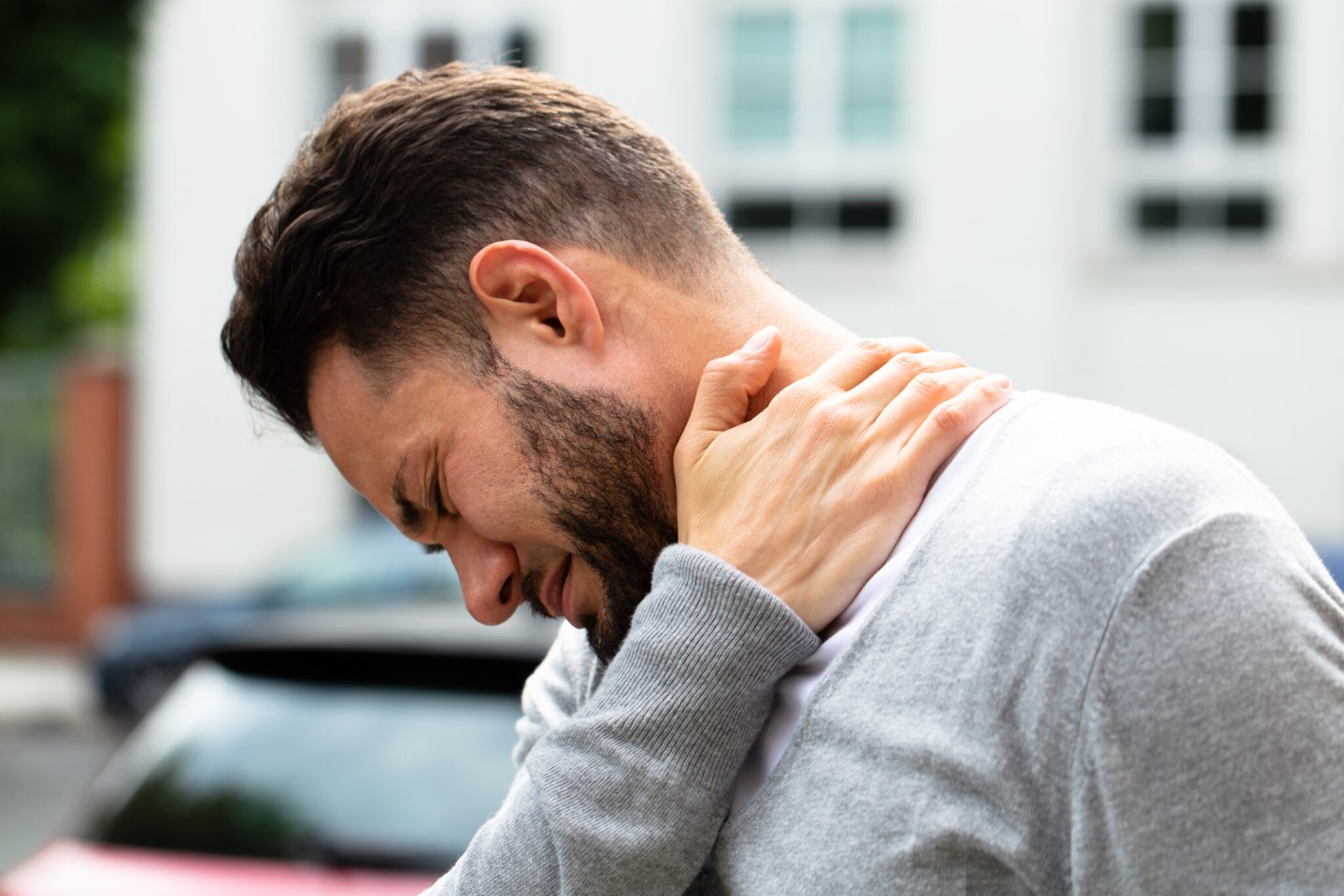Urgent Care vs. Virtual Quick Care vs. ER: A Guide to Getting the Right Care, Right Now
DEC 22, 2025Choosing correctly can save you time, money, and ensure you get the most appropriate and timely treatment.
Read More
Neck pain is a very common problem, which can seriously limit your daily activities. Most adults experience some neck pain and discomfort at some point in their lives.
The most common cause of neck pain is often a strained muscle or a sprain in the ligaments or tendons. Lifting something heavy, sleeping in an awkward position or trying a new activity can all do damage to the soft tissues. These types of injuries get better on their own with time and over the counter pain medication. During the recovery from these injuries, the patient should generally limit activities that make the pain worse. All movement should not be stopped, as immobilization can cause the muscles of the neck to weaken and therefore cause more pain and a longer recovery. Ways that you can manage this type of pain easily include:
Under normal circumstances the cervical spine is very mobile. It is composed of the first seven vertebrae in the spine and it’s normal curvature is a backward "C"-shape. The upper two vertebrae in the cervical spine, the atlas and the axis, allow the head to rotate on the spine. These two vertebrae are the reason your neck can move in so many directions.
In between each vertebra there is a disc, which is made of a gel-like material in the center, and a tougher outer shell. The outside of the disc can weaken with age or injury, and the inner contents can get pushed out and compress the spinal cord or a nerve and therefore causing pain, numbness or tingling in the arm.
The cervical spine is very flexible, but it is also at risk for injury from strong, sudden movements, such as whiplash-type injuries. There is limited muscle support in the cervical area. The head weighs about 12 to 15 pounds and is balanced on top of the atlas bone at the top of the spine. Sudden, strong head movements can cause damage to the bones, ligaments, or even the arteries that carry blood to the brain.
In rare cases, the pain may be caused by compression of the nerves in the neck due to long standing spinal degeneration or sudden herniation of a disc. Spinal degeneration is a term that medical professionals use to describe the amount of wear and tear in the spine. As we get older, the joints in our spine wear out at different rates and the phenomenon of spinal degeneration occurs.
When the nerves to your arms, hands and fingers become compressed because of spinal degeneration, arm, hand and finger pain can occur. The pain would generally travel from the neck area all the way to the fingers. Pain can become worse with moving the neck and can be constant. You may also experience weakness of the hands, numbness and tingling. In addition, depending on how much the spinal cord is compressed, you may experience trouble walking, balance issues, or falls.
There are instances when the causes of neck pain can be due to shoulder injury, such as rotator cuff tear, or due to a neurological disorder, other than spinal degeneration, such as multiple sclerosis. In those cases you may need to have an MRI of the shoulder or arm, and be seen by orthopedic provider, or may need to be seen by a neurologist and have a lumbar puncture and other tests.
More than 90% of all the neck pain, however, is musculoskeletal in nature and improves with physical therapy. Therefore the best treatment for neuromuscular pain syndromes, including fibromyalgia, is physical therapy and pain management, acupuncture and yoga. If however the pain persists, you should contact a neurosurgeon. Before your doctor can diagnose your condition and design a treatment plan, a complete history and physical exam are necessary. This will give your doctor a better idea of the cause of your condition. Then appropriate diagnostic tests may be recommended. These may include MRIs of the cervical spine, Xrays, bone density scan, EMG/NC studies, or myelogram.
If you have more questions about neck pain, reach out to your provider today.

Choosing correctly can save you time, money, and ensure you get the most appropriate and timely treatment.
Read More
MS is not rare. It’s estimated that nearly 1 million people in the United States and 2.8 million worldwide live with MS.
Read More
COPD is a group of progressive lung diseases that block airflow and make it difficult to breathe.
Read MoreWhen you need local health information from a trusted source, turn to the CHI Health Better You eNewsletter.